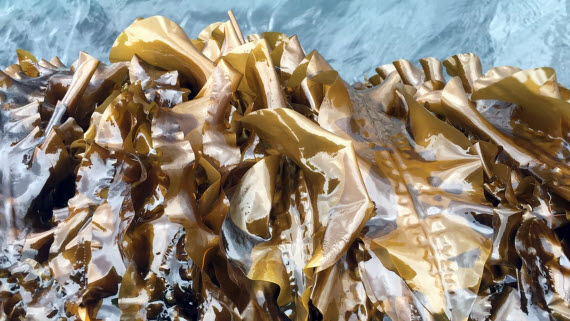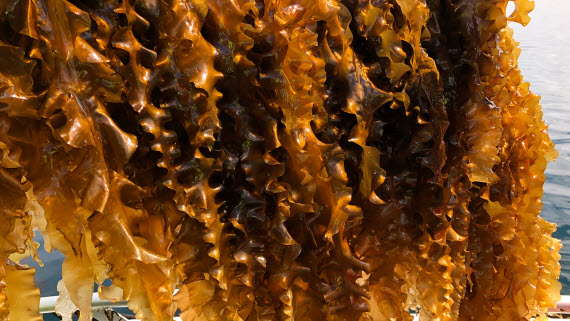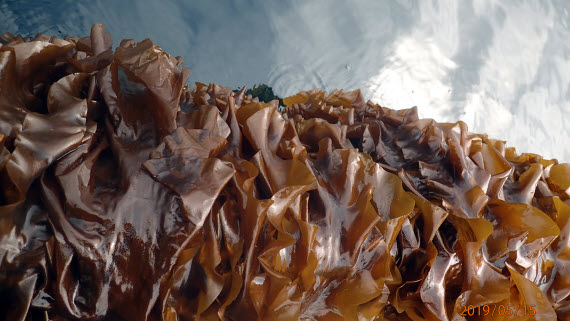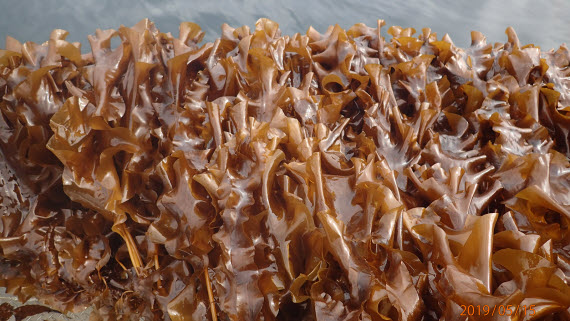WP2: Sea Cultivation (NTNU, SINTEF Ocean, APN, NIVA, UiT, Industry partners)
The variation in growth performance, biochemical composition and biofouling of cultivated S. latissima is mainly caused by seasonality and depth, varying systematically along a latitudinal gradient.
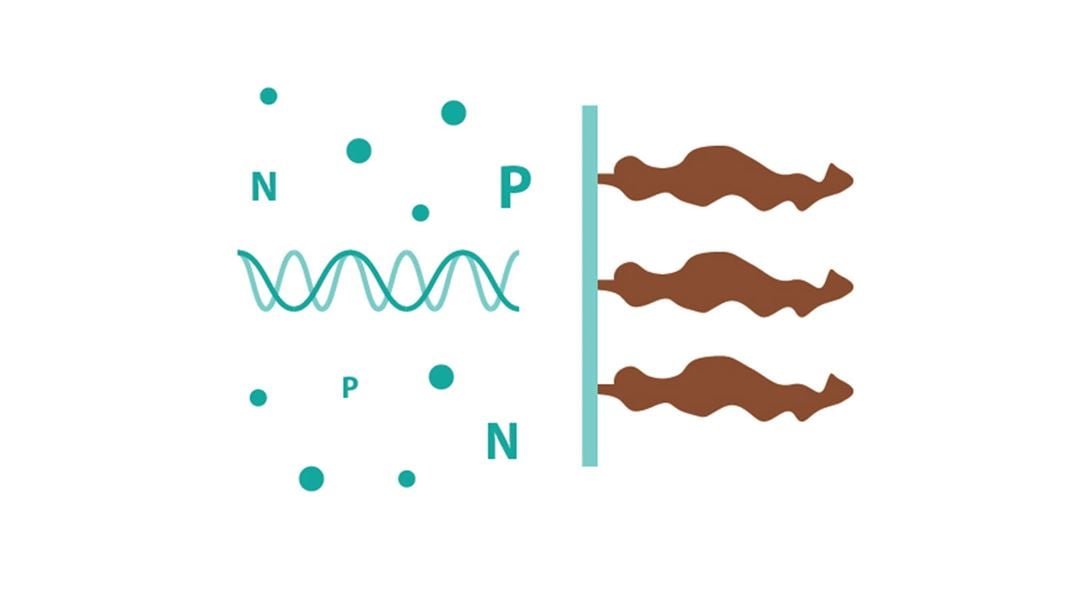
The variation in growth performance, biochemical composition and biofouling of cultivated S. latissima is mainly caused by seasonality and depth, varying systematically along a latitudinal gradient. The results from a monitoring program showed that maximum frond length and biomass yield occurred up to 2 months earlier at southern locations than at locations further north in Norway, suggesting a potential to supply the consumer market or processing industry for an extended period. Protein content showed a decreasing seasonal trend before onset of biofouling and the seasonal decrease was delayed at higher latitude. The same delay with latitude was observed for biofouling organisms, suggesting that a cultivation and harvesting strategy should follow these latitudinal patterns. Production, expressed in terms of frond length and biomass yield, was higher at shallow cultivation depths than deeper, whereas protein, ash and internal nitrogen compounds were generally higher at deeper depths. Salinity appeared to have an important impact by diminishing seaweed biomass yield and frond length, ash content and biofouling cover. Less light at deeper cultivation depths enhanced the protein content and altered the biofouling species composition.
